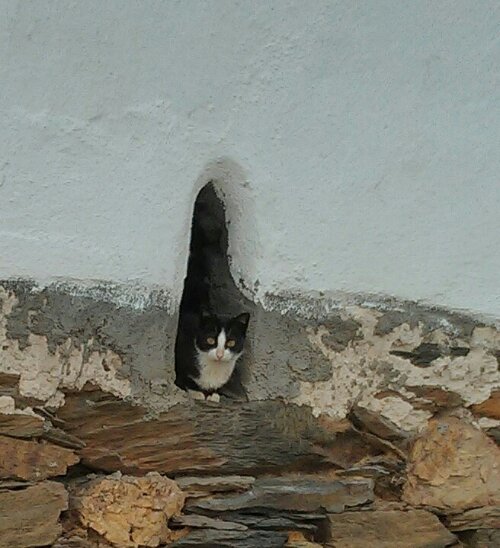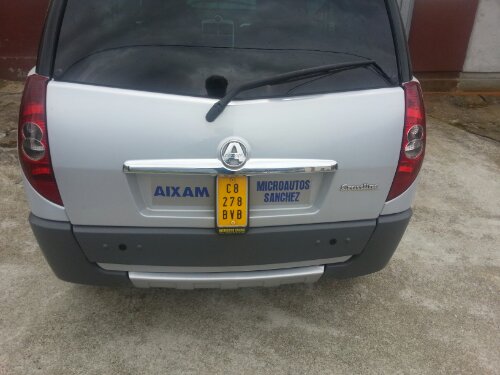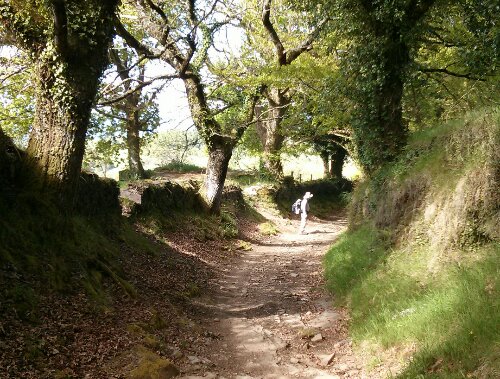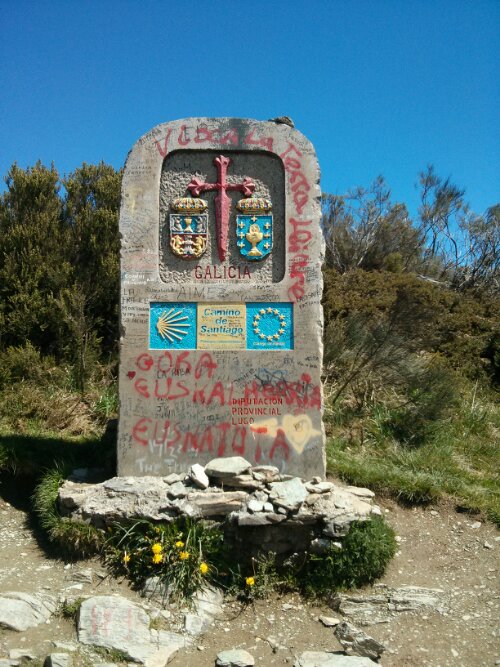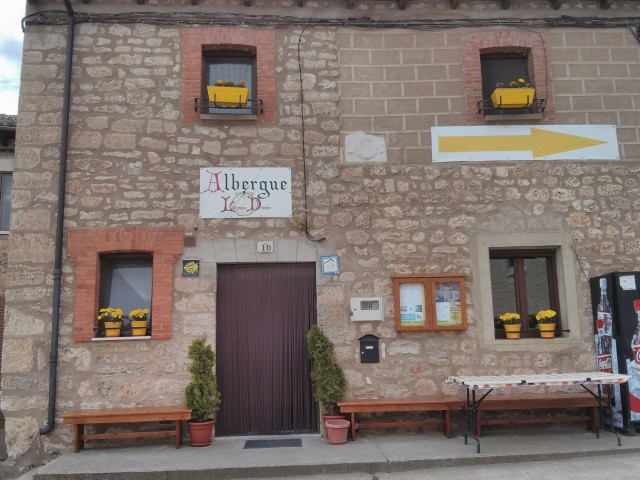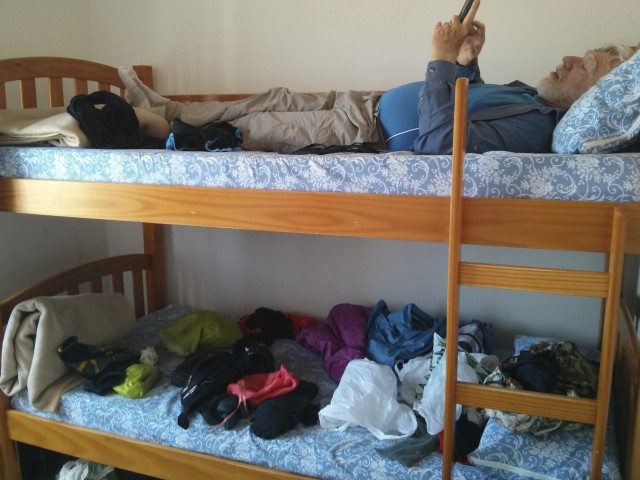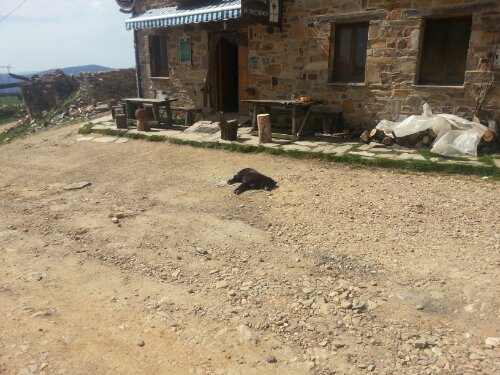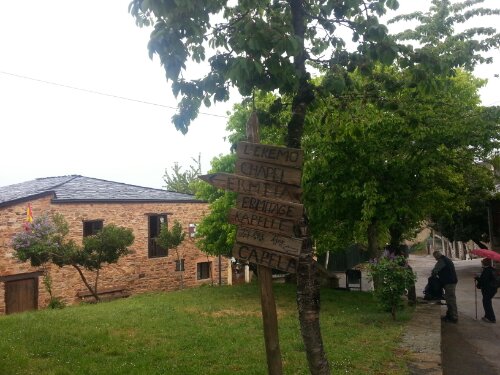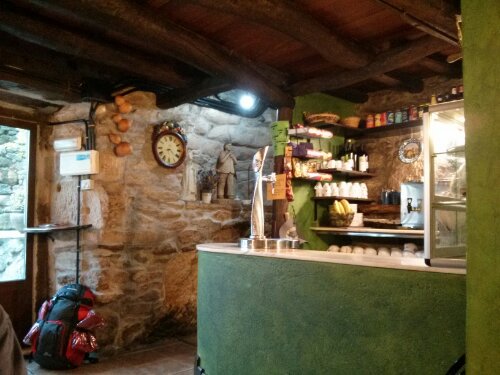
Wynette: We’ve been surprised how it’s taken us some time to learn a few practical things. We thought we’d list some things here we wish we’d known earlier in case you are planning to do the Camino.
1) If a steep uphill or downhill is slowing you down or causing knee pain and the path is fairly level and smooth, zigzag your way up or down. In other words do little switchbacks right on the path. Even though it’ll take more steps, you’ll probably go faster and with less discomfort. We learned this when we saw another pilgrim doing it. At first you feel a little silly but we didn’t let that stop us, and then we noticed a few others copying us after watching us do it.
2) When ordering a bocadilla (Spanish-style sandwich) feel free to ask for exactly what you want on it, even if your favorite combination is not listed on the menu. For example, cheese, chorizo, tomato, olive oil. Well, I haven’t had the nerve yet to to ask for mayonnaise, but I think the Spanish wouldn’t mind even though they might think I’m strange.
3) If you are burned out on bocadillas (that happened to us) don’t be afraid to ask for things that aren’t on the menu. For example, we started asking for huevos fritos con tostadas (fried eggs with toast) any time of the day. Most places have been happy to oblige. And the eggs are so fresh and delicious and prepared exactly the way we like them: over easy. If you like them some other way you’ll probably need to ask because over easy seems to be the default.
4) If you are tired of the constant patatas fritas (French fries) that come with every pilgrim’s menu, ask if they’ll substitute ensalada. We just did this today for the first time and they were happy to do it. In general, we have found the salads to be delicious. At least at this season, April/May, the lettuce is so fresh.
5) We recently started ordering one pilgrim’s menu to share between the two of us. We were shy about doing that earlier but no one seems to mind. There’s always so much food, one menu is plenty unless we are really hungry.
6) Last night we stayed in a private room in an albergue. Since some albergues offer washers and dryers, we asked about it there. They said no, but added they’d do a load for us for 3 euros to wash and 3 to dry. This was a bargain because hand washing is so much work, things don’t get as clean, and in this cold, very damp weather, it’s hard to get things to dry, especially thick socks. (Some of our rooms have had no or very little heat.) What a luxury to have everything squeaky clean and dry. We didn’t realize this service is often available in these places.
7) If you don’t want your whole bottle of wine that comes with your pilgrim’s menu, offer what you have left to the pilgrims sitting at your table who have finished theirs. We did this last night and they eagerly accepted and it opened up conversation at our table of two people from USA, two from Slovenia, one from Argentina, one from Spain.
Note: Since we took some time learning about these things, places earlier on the Camino might not be the same. For example, you’ll notice the food slowly change as you walk from region to region. So everything we’ve said above might not apply everywhere.
We stayed at a few albergues but mostly in hotels, casa rurals, hostals, and such. If we’d stayed in more albergues, we’d probably have talked to more pilgrims and learned these things sooner.
